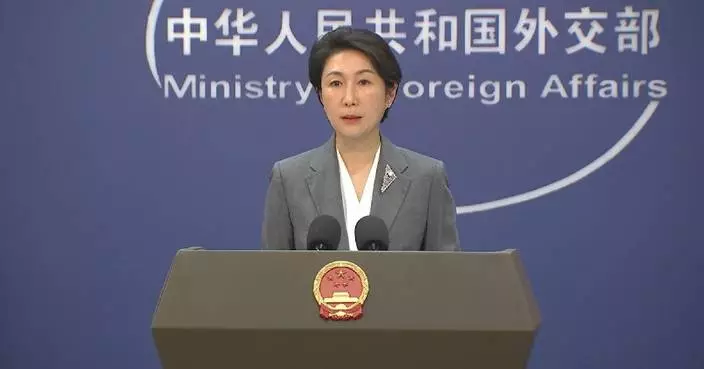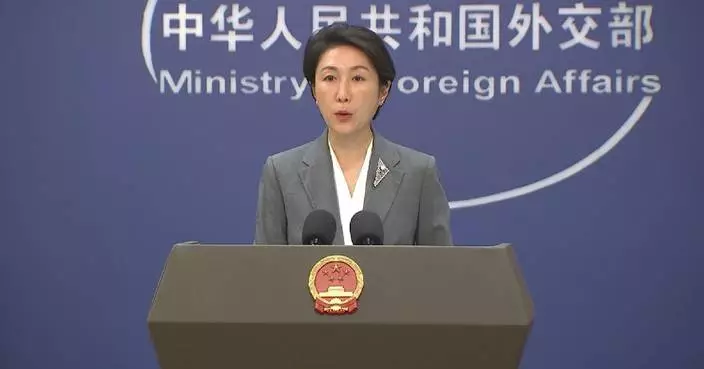China has completed this year's summer grain procurement process, securing abundant grain reserves as the country expects a bumper autumn harvest, according to the National Food and Strategic Reserves Administration.
China's grain production reached 149.78 billion kilograms this summer, an increase of 3.625 billion kilograms from the previous year, data from the National Bureau of Statistics showed.
The National Cereals and Oils Information Center projects China to achieve food security as the supply of three major grains remains stable in the 2024/2025 year and stocks of staple foods such as wheat and rice account for over 70 percent of the inventory.
"In terms of supply and demand, the domestic grain situation is optimal and grain reserves are sufficient. We can fully meet daily consumption needs and can ensure an effective response to major natural disasters and emergencies impacting the grain market," said Wang Xiaohui, director of the National Grain and Oils Information Center.
Market transactions have been active as summer grains hit the market, with grain procurement surpassing that of the same period last year. Grain enterprises in major production areas have purchased 66.83 million tons of wheat and 7.73 million tons of early rice.
"By the end of September, the peak of summer grain procurement concluded smoothly. Generally speaking, the procurement prices for wheat and early rice in major production areas remained stable, higher than the minimum procurement price, and the minimum procurement price plan was not activated," said Luo Shouquan, head of the grain reserve department of the National Food and Strategic Reserves Administration.
In recent years, the National Food and Strategic Reserves Administration has been actively promoting high-quality grain projects, implementing green storage upgrade actions and continuously strengthening emergency food security capacity.
China has also established a grain emergency response system covering storage, processing, distribution, and supply. Now, the country has over 6,900 emergency grain processing enterprises with a daily processing capacity exceeding 1.7 million tons, capable of meeting the needs of the entire country for two days.
"Since the release of the 14th Five-Year Plan, the National Food and Strategic Reserves Administration has built and upgraded storage capacities exceeding 65 million tons, and continuously enhanced the effectiveness and performance of environmentally friendly granaries. This has not only ensured the quantity of food supplies, but also improved the quality and freshness of reserved grains," said Wang Hong, spokesman of the National Food and Strategic Reserves Administration.
Agricultural technological advancements have also boosted the grain output in the country. Over 60 percent of the national harvest has been completed, with winter wheat sowing now underway in some parts China.
In Qihe, a county in east China's Shandong Province, data from the unmanned seeders have been uploaded to the cloud, generating agricultural big data necessary for providing recommendations for intelligent agricultural production.
"The sowing parameters of the seeder can be precisely adjusted in accordance with wheat varieties, soil conditions, and agricultural requirements. Coupled with the unmanned driving system, the operational accuracy can reach centimeter level, significantly enhancing accuracy compared to manual operations," said Li Chao, vice chairman of the Bohao Agricultural Machinery Service Cooperative.
In Tongliao, a city in north China's Inner Mongolia Autonomous Region, agricultural robots and drones have advanced disease and pest control mechanisms.
Agricultural drones are not only used in corn farming in the city, but also serve more grain fields, orchards, and economic crop planting areas nationwide.
China has more than 200,000 agricultural drones and the widespread use of drones has created new employment opportunities in Chongqing.
"In the four stages of farming, namely plowing, sowing, managing, and harvesting, the intelligent agricultural machinery and new agricultural techniques and practices are integrated. The integration of agricultural processes and services has led to a significant improvement in grain yield and quality," said Luo Yonggang, deputy director of the council of Chongqing Supply and Marketing Cooperatives.

China sees surplus in grain reserves, expects bumper autumn harvest









